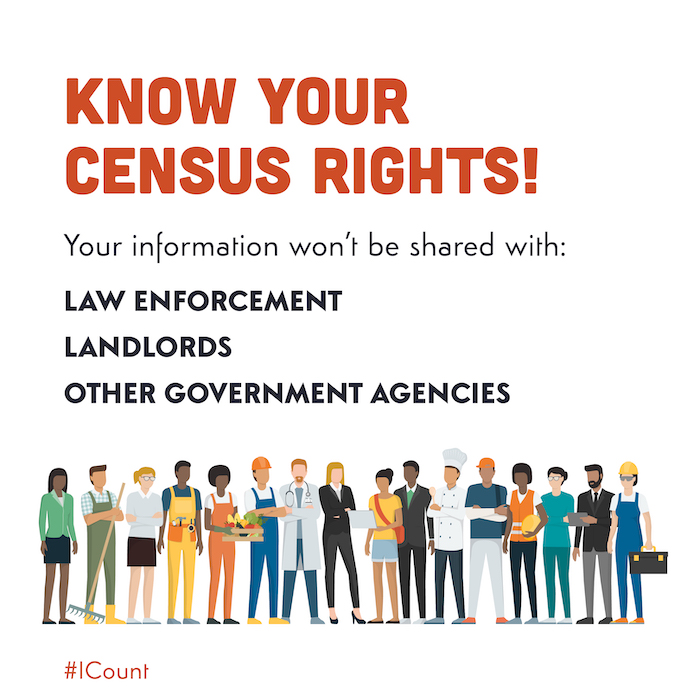By Mark Hedin/Ethnic Media Services
The 2020 census, now in its second month of collecting data, is on track to be “one of the most incomplete in history,” according to UCLA researcher and advisor to the U.S. Census Bureau Paul Ong.

In keeping with past collections, kids younger than 5, people of color, and households that include immigrants, are impoverished or lack English-language skills are the most likely to be uncounted in the census tally, a reality that will affect government spending priorities for the next decade,
The nationwide household response rate for the past month has been at least 11% behind its 2010 census rate (https://tinyurl.com/UCLACensusStudy), Ong says. In that census, considered the most accurate yet and with a 74% response rate, the population most left out — officially 2 million — was kids younger than 5.
Being counted in the census benefits individuals and their communities. In general, for every person of any age, being counted in the census is worth an extra couple of thousand dollars of government funds for hundreds of programs, including many that target kids’ well-being by boosting their education, nutrition, housing and more. Since 2010, the uncounted children’s needs have been left out of funding decisions.

Almost 16.5 million kids younger than 5 live in the United States now. The Washington, D.C.-based Population Research Bureau (PRB) recently estimated that up to 25% of them — 4.065 million — live where there’s a “very high risk” that their household will not complete the nine-question census form. And another 9.29 million are at “high risk” of not being counted.
In those very high risk regions, as of early May, the household census response rate was 48.6%, while the overall national rate was 54.6%. Households of all sizes, rather than individuals, comprise the basic unit of census responses.
Kids deemed at very high risk of not being counted live in poverty; among adults 18-34 with low educational attainment; in households either led by women with no spouse present or only with grandparents; in households with limited English-language skills; in immigrant families or in families that are renters.
The PRB study (https://tinyurl.com/PRBstudy) found that these conditions varied by ethnicity. Among African Americans, for example, 48% of kids younger than 5 are considered at very high risk of not being counted. For Latinos, it’s 38%, and for American Indian/Alaska Natives and Native Hawaiian/Other Pacific Islanders it’s 31%.
The very high risk rate for Asian Americans kids 0-5 is 28%. It’s 22% for those identifying as being of two or more ethnicities, and for non-Hispanic whites it’s 9%.
The PRB study also offers some new tools to identify where this year’s potentially uncounted children live, the better to ensure their inclusion in the census count.
Of the nation’s more than 3,000 counties, 689 were home to 93% of 2010’s uncounted kids, the researchers found. From there, the study highlighted the census tracts — typically about 4,000 people each — within several major U.S. urban areas to show where kids are most likely at very high risk of being overlooked.
In Miami-Dade County, 84% of its kids younger than 5 were in that category. In Philadelphia the percentage was 64%. New York was 57%, Washington, D.C., 53%, and Harris County, Texas (Houston), and Cook County, Illinois (Chicago), both 40%. Wayne County, Michigan was 39%.
Linked to the PBR study were interactive maps drawn by the City University of New York’s Center for Urban Research with detailed descriptions of each census tract, nationwide, and a link to a downloadable Excel spreadsheet.
The descriptions, including estimates of how many kids live in the census tracts and under what circumstances, are largely based on information in the American Community Survey (ACS), which the Census Bureau gathers in between the decennial censuses, and other non-decennial Census Bureau studies. They offer more details about people’s circumstances but don’t attempt to count everybody.
Another resource is CUNY’s “Hard to Count” maps (https://tinyurl.com/CUNYsHTCmap) that have tracked census response rates and challenges since the data-gathering process began in mid-March.
Because the ACS and other non-decennial surveys extrapolate from samples, the resulting data isn’t used in the important decisions based on the decennial census, such as how many seats each state has in Congress or how $1.5 trillion of federal funds are spent every year.
If you want you or your kids to be included in those plans for the 2020s, it’s time to make sure you and your community are counted. The next chance will be in 2030.



















